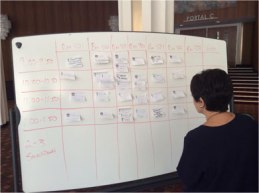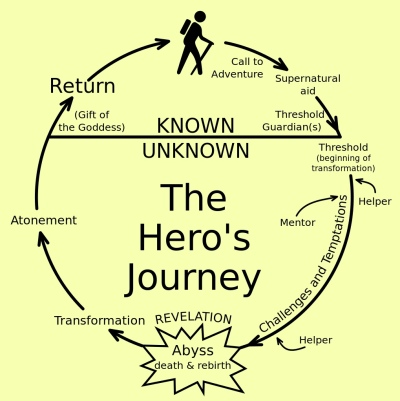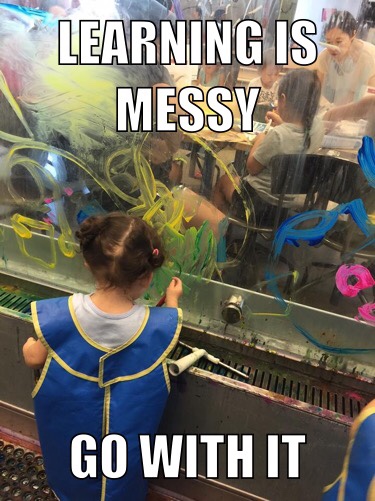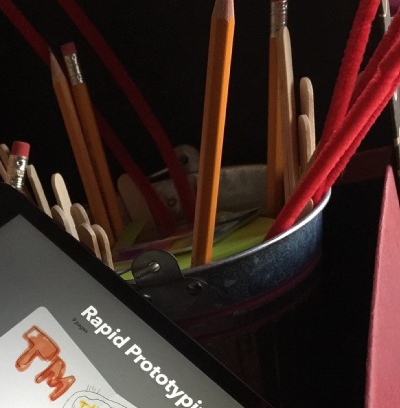INTRO
During an EdChat the other day I learned about The Hero's Journey as a learning metaphor and process.
A FUNNY THING HAPPENED ON THE WAY TO MLEARNCON
CUE cap on my head and suitcase in hand Monday afternoon I opened the front door of my home. I was eagerly anticipating my road trip to Austin, Texas for the eLearning Guild's mLearnCon (mobile learning) conference.
I was surprised to find Mrs on the other side of the door about to use her key to unlock it. She was coming home from a job interview. Long story short we had agreed she'd stay home with our granddaughter whilst I went to the conference. She asked if she and the baby could come. Saying no to Mrs is hard to do 24 years into our marriage. Off she went to pack.
AUSTIN
Some months ago I was encouraged by @lnddave tweet asking for proposals to present at a mobile learning conference hosted by the eLearning Guild. This was my Call to Adventure. Two of my proposals were accepted. More on these a little later.
Getting to the venue in time for the mLearn conference, from June 10 to 12 came with challenges. Through a lottery I got a chance to go to EdCampUSA in Washington, DC in late May. It was great learning and growing and connecting with other educators. Mrs and I spent the next day together playing tourist taking in the many historical sites the capitol region has to offer. This ate up our vacation budget for the year.
I tend to go cheap to the PD events I participate in. I usually drive a long distance in my 11 year old Honda Pilot, now pushing 380,000 miles. On really long trips, over 500 miles, I sometimes camp out under the stars. With Mrs and Carly, our 21 month old granddaughter, along for the ride the trip to Austin was shaping up to be a grand quest.
THRESHOLD
Carly is a wonderful kid. She is very good at playing the toddler role. At times a joy to be around she would occasionally have issues. If you're closely associated with small children you know what I mean. She learns quickly, mostly through trial and error. She is fearless. She usually overcomes challenges. Sometimes she's distracted by a shiny object but even that's okay as it's another learning opportunity.
REVELATION
My first mLearnCon AHA! moment happened far from Austin. Carly is the poster child for mobile learning.
At 21 months of age telling Carly what life is about doesn't have much impact. There's too much cool stuff for her to experience.
ABYSS
So we make it to Austin late on the 9th. Unfamiliar with the area we get lost for a while before finding our motel. Once in the room we notice Carly looking flushed. She has a fever. Thankfully a Walgreens was across the road from us. A few hours later her temperature falls and so we sleep.
Only we wake up too late to catch the mLearnCon keynote and opening excitement. A big reason I had for going was networking. I had hoped to grow my PLN (Personal Learning Network).
TRANSFORMATION
No worries. Mrs and Carly Uber to The Thinkery, Austin's children's museum. I uber to the conference venue. I catch a session on interface design. It's 2:30 pm on Wednesday June 10 and my session on teaching strategies I learned through a year of EdCamp is up. My Google slides for the session are here. I tried a presentation strategy I learned at #CUE15: setting permissions so anyone could edit my presentation and providing the url to the file on Google drive. I got done with my presentation about 20 minutes early, hoping to start a conversation about stuff that participants had added. Only no one had. I have to rethink this. At CUE15 participants had added dozens of slides. I can feel a transformation coming. I'm going to participate in CUERockstar in Las Vegas in August. I have questions to ask and ideas to try out. Something is definitely up.
ATONEMENT
Thursday I gave a talk on appsmashing. You can access my presentation file here. I think we connected, the participants and I, during my talk. A highlight was when I demoed Paper and Plotagon. These are my fav apps. Paper is amazing for sketching. It's the virtual napkin where many of my ideas are born and fleshed out. Plotagon is a different tool. In a nutshell it creates 3D clips working from text you enter. You pick scenes and characters and Plotagon does the heavy lifting. In minutes you have a working, moving, and talking prototype of a script.
I've been an instructional designer for over 16 years. I think I've gotten better in my practice over the years. Sharing what I learn from teachers and others in K-12 does me good. I hope I'm helping others along their journey, too.
OUTRO
I had this idea the other day. What if I packaged snippets of what I learn and practice into little snippets of know-how and put them out there? Call it a six minute EdCamp. The conversations I have with teachers is the fuel. I'm evaluating some apps to make it happen. The best part: The Heroes Journey begins anew. By the way, I say heroes in the plural because it's about us learning together. Smashing is not just for apps. It can be about people smashing ideas, too.






















